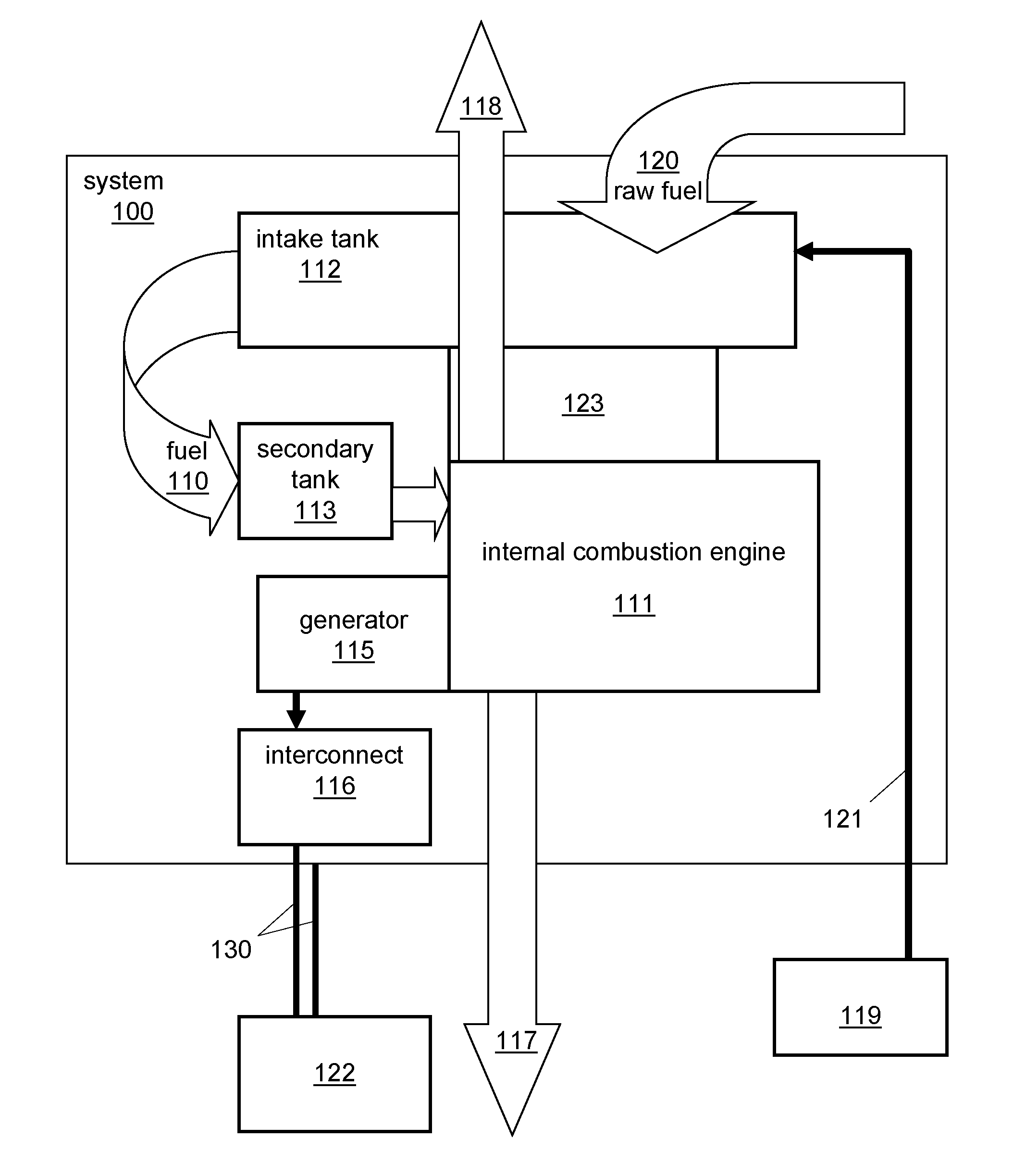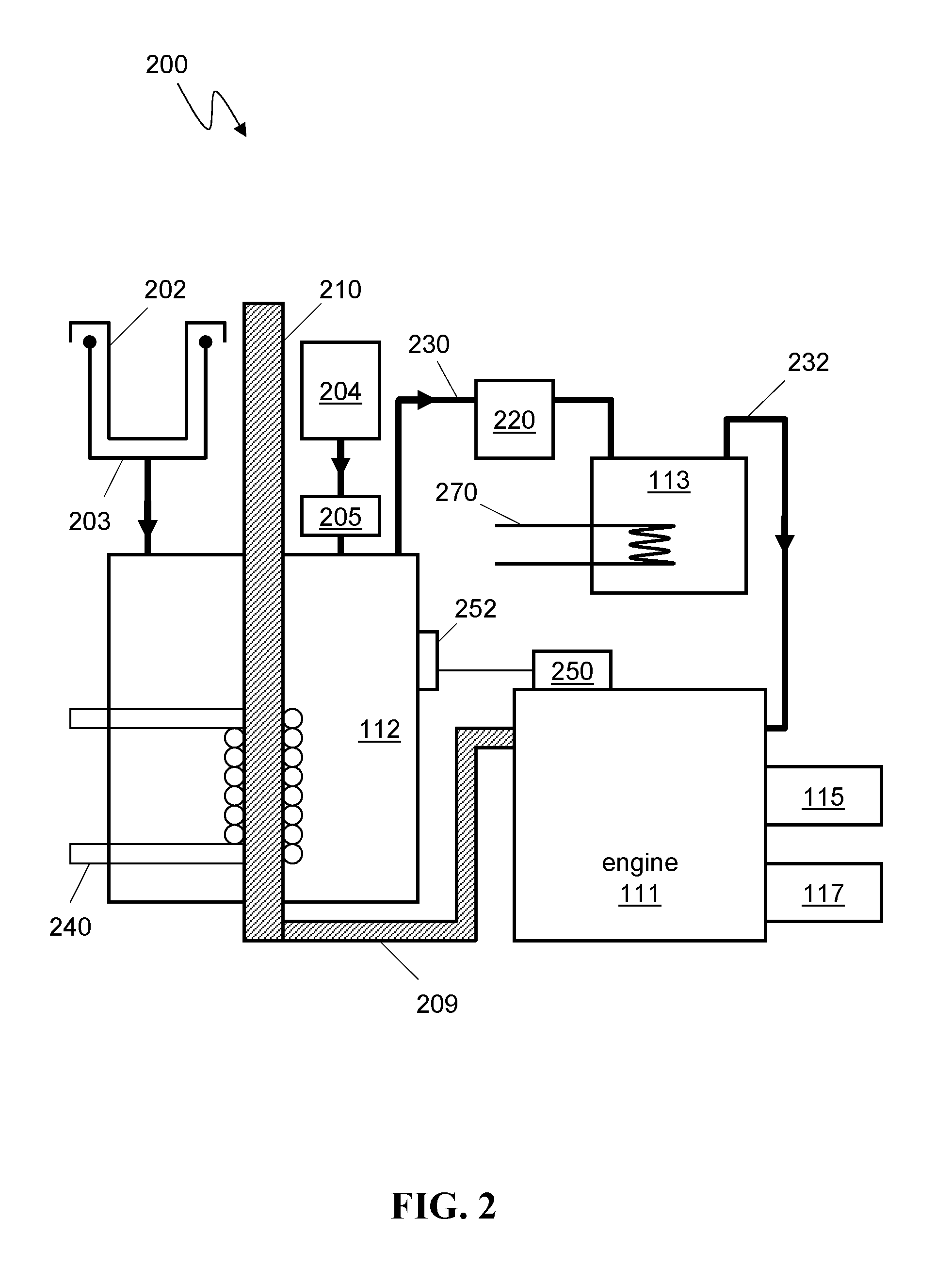Waste recovery cogenerator
a cogenerator and waste technology, applied in the direction of combustion air/fuel air treatment, lighting and heating apparatus, combustion types, etc., can solve the problems of large interconnection devices of large facilities, high cost, and high cost of transportation and processing waste, so as to facilitate water removal and filtering and prevent the effect of filter blockag
- Summary
- Abstract
- Description
- Claims
- Application Information
AI Technical Summary
Benefits of technology
Problems solved by technology
Method used
Image
Examples
Embodiment Construction
System Overview
[0026]In overview and referring now to FIG. 1, in various embodiments, the waste-recovery cogeneration system 100 comprises a combined heat and power (CHP) system. In certain embodiments, the system 100 comprises a waste-recovered-fuel intake tank 112, a secondary tank 113, an internal combustion engine 111, a generator 115, and an electrical power interconnect device 116. In certain embodiments, an excess thermal energy system 117 is provided with the system 100. In various embodiments, an exhaust system 118 transports high-temperature combustion products from the system's engine 111. In certain embodiments, the cogeneration system 100 includes a transport line 121 and apparatus 119 for automated secondary fuel acquisition. In some embodiments, apparatus 119 comprises a grease interceptor, or grease trap. Raw fuel-laden waste 120 can be provided to intake tank 112. In certain embodiments, partly processed waste-recovered fuel 110 is provided to secondary tank 113 and...
PUM
 Login to View More
Login to View More Abstract
Description
Claims
Application Information
 Login to View More
Login to View More - R&D
- Intellectual Property
- Life Sciences
- Materials
- Tech Scout
- Unparalleled Data Quality
- Higher Quality Content
- 60% Fewer Hallucinations
Browse by: Latest US Patents, China's latest patents, Technical Efficacy Thesaurus, Application Domain, Technology Topic, Popular Technical Reports.
© 2025 PatSnap. All rights reserved.Legal|Privacy policy|Modern Slavery Act Transparency Statement|Sitemap|About US| Contact US: help@patsnap.com



